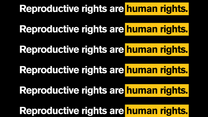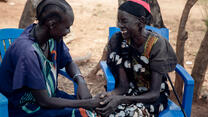Adolescents have unique sexual and reproductive health (SRH) needs and, in humanitarian settings, these needs intensify. In particular, adolescents in crises are at risk of early and unprotected sex, unintended pregnancies, unsafe abortion and Sexually Transmitted Infections (STIs). Yet there is limited evidence on effective interventions for increasing adolescent access to and use of SRH services in crises and humanitarian funding is often insufficient to meet adolescent SRH needs. More information is needed to better understand the vulnerabilities and needs of adolescents in emergency settings, especially girls. The evidence base for adolescent sexual and reproductive health (ASRH) is poor, despite adolescent girls being at the highest risk of maternal morbidity and mortality and more likely to pursue unsafe abortions. Most ASRH research has focused on development settings and there are few documented examples of effective and evidence-based approaches in emergencies that improve access and quality of ASRH. Existing evidence on ASRH interventions shows that many strategies proven to be ineffective continue to be implemented and replicated, and strategies that have been shown to be effective are delivered inadequately. Youth centers, peer education, and high-profile meetings on ASRH have been shown to be ineffective yet remain popular approaches and peer education programs mainly benefit peer educators rather than their intended beneficiaries. Interventions that have been proven to be effective, such as comprehensive sexuality education and appropriate SRH services, are often poorly implemented. Available evidence on effective adolescent participation frameworks in sexual and reproductive health programs – in both development and humanitarian contexts – is even scarcer. Many ASRH implementers continue to struggle with operationalizing adolescent participation within their program frameworks.
To respond to the need of adolescents in humanitarian settings, the IRC drew upon evidence-based best practices, as well as its experience in humanitarian settings, to test two different packages of interventions aimed at increasing access, use, and quality of ASRH services in two different chronic complex emergency settings in Nigeria and South Sudan. The first approach, a “Core ASRH Intervention Package” aimed to address fundamental facility and community-level barriers to ASRH service use and quality. The second approach, “Engage, Empower and Act for Adolescent Health,” integrated a Participatory Action Research (PAR) framework into the Core ASRH package to directly implicate adolescents and key influencers in their community in project implementation. Adolescents and select stakeholders worked through one PAR cycle to strengthen ASRH services in their project area while also working to improve joint communication, understanding, and partnership between one another. The overall goal of this research was to document the lessons learned and ultimately improve the humanitarian field’s understanding of the most effective and efficient package of interventions to improve adolescent SRH and meaningful engagement in complex emergencies.



